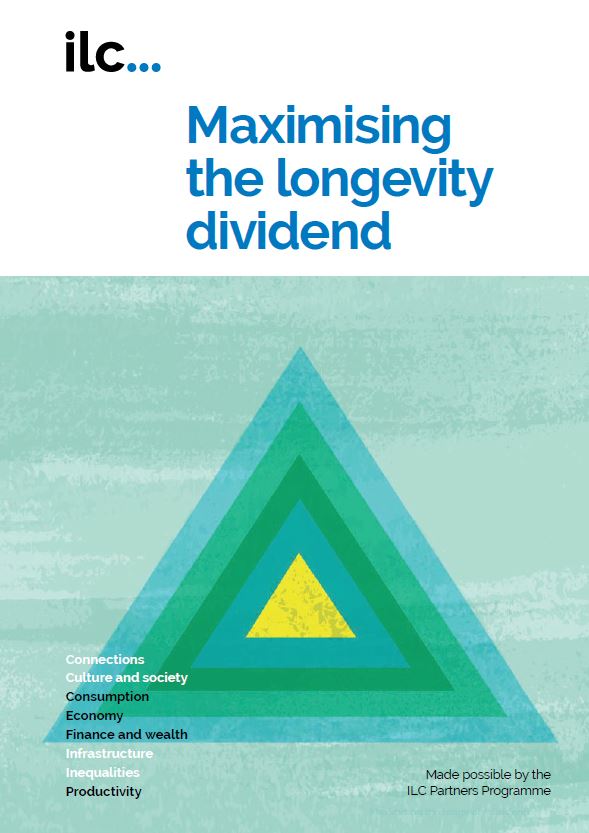Maximising the longevity dividend
We’ve become accustomed to hearing our ageing population presented as a bad thing. Ageist attitudes are reinforced by policy makers spending more time worrying about the fiscal costs of ageing than exploring how to maximise the opportunities of longer lives. Our public policy response to longevity is too often negative and defensive.
While we can’t ignore the impact of ageing on the public purse and the wider economy, our analysis finds that:
- The next decades will see huge growth in consumption by older people – as there are more older consumers and they spend more on average. Spending by older consumers will rise from 54% (£319 billion) of total consumer spending in 2018 to 63% by 2040 (£550 billion).
- People aged 50 and over are shifting their spending towards non-essential purchases such as leisure. The top three growing sectors for older consumers are recreation and culture; transport; and household goods and services.
- The share of the workforce aged 50 and over rose from 26% in 2004 to 32% in 2018 and could be 37% by 2040.
- People aged 50 and over earned 30% of total earnings (£237 billion) in 2018 and this will rise to 40% by 2040 (£311 billion).
If we take action to enable older people, as workers and consumers, we can realise a longevity divided:
- Tackling the barriers to spending by people aged 75 and over by 2025, could add 2% to GDP a year by 2040.
- If we could support those aged 75 and over to match the spending of 65 to 74-year-olds by 2025, we could add 8% a year to GDP by 2040.
- If the ‘missing million’ involuntarily unemployed older adults were supported in to work by 2022, this could add 1.3% a year to GDP by 2040.
- If we continued this progress up to 2028, we could add 2% a year to GDP by 2040.
However, these benefits won’t be realised on their own. We have identified four areas for action:
- Enable healthy ageing – we need action to make sure our extra years are healthy years; this includes investment in prevention across the life course, and more effective support to manage long-term conditions at work and in our communities.
- Address the barriers that exclude older people – we need action to ensure our high streets are accessible and inclusive, our workplaces are free from age discrimination and the digital divide is closed.
- Support older people’s incomes – we need to support people to make adequate savings to enable them to make positive choices about work and leisure in later life.
- Encourage businesses to respond – businesses need to act now to realise the longevity divided. Employers need to invest in their workforce in mid and later life to ensure that they can attract and retain the best talent in an ageing society. Service providers and product developers who respond to the changing needs and demands of an ageing population –making sure their products are accessible and attractive – will reap the rewards.
Author: Sophia Dimitriadis

